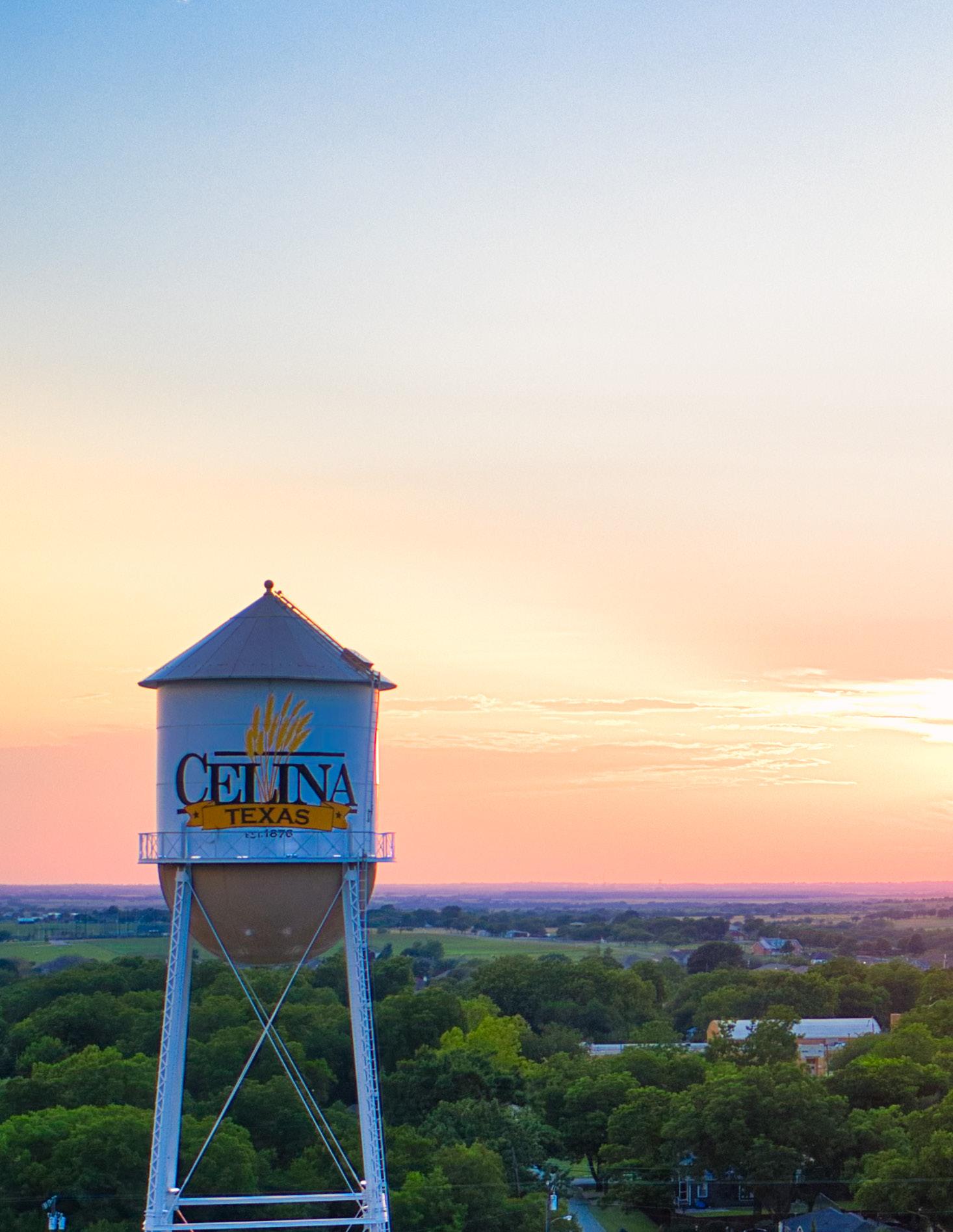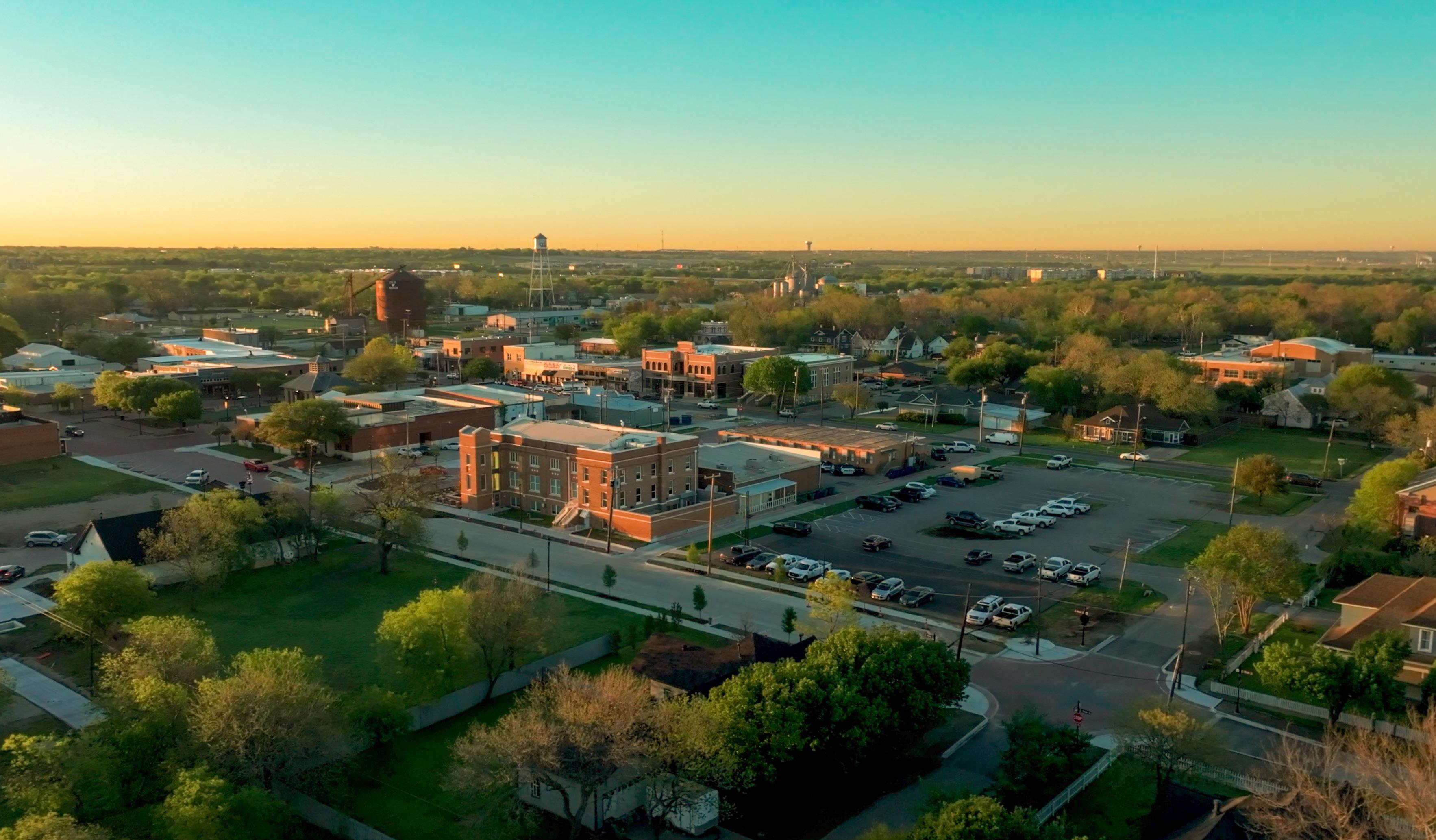

City of Celina Fiscal Year Ending September 30, 2023



City of Celina Fiscal Year Ending September 30, 2023

Our Residents,
The City of Celina is pleased to present the City’s financial report for the fiscal year ended on September 30, 2023. I hope that this report summarizes the City’s financial position in a way that helps you to know how your tax dollars are invested in services and the current condition of the City’s finances.
For fiscal year (FY) 2023, the City maintained a strong financial position. We invested $16.1 million in public safety with 22 new positions. We issued $98.0 million in bonds to pay for new streets, water and wastewater system upgrades, parks, and more. We maintained current water, sewer, stormwater, and refuse collection rates, while continuing to grow our system. We accomplished all of this with a prudent, balanced budget that is building a resilient, sustainable City in the midst of unprecedented residential growth.
This report focuses on the General Fund (which pays for most City services) and the utility funds (which includes water, wastewater, and refuse collection). If you are interested in a deeper dive into all of the City’s funds, I’d encourage you to check out our Annual Comprehensive Financial Report.
Sincerely,

Celina is a “Home-Rule Municipality,” governed by a Mayor and City Council who are elected by the residents. Since its establishment in 1876, Celina residents have elected representatives to achieve City goals and enhance their quality of life. Acting together, the Mayor and City Council adopt all ordinances and resolutions and determine the general goals and policies for the City. The City’s mission of preserving its agricultural heritage, providing excellent public safety, and an extraordinary quality of life are all key factors in each decision.





 Jay Pierce MAYOR PRO TEM, PLACE 2 Wendie Wigginton DEPUTY MAYOR PRO TEM, PLACE 4
Andy Hopkins PLACE 3
Philip Ferguson PLACE 1
Mindy Koehne PLACE 5
Brandon Grumbles PLACE 6
Jay Pierce MAYOR PRO TEM, PLACE 2 Wendie Wigginton DEPUTY MAYOR PRO TEM, PLACE 4
Andy Hopkins PLACE 3
Philip Ferguson PLACE 1
Mindy Koehne PLACE 5
Brandon Grumbles PLACE 6


Celina will continue to experience substantial growth over the next several years, and we have a deep understanding that to be truly great, we must make a series of thoughtful and strategic decisions, which are consistent with our core values. Our efforts and resources will be focused on goals that reflect best practices, our strengths, and our greatest opportunities.
Celina is located in Collin and Denton Counties, nestled between the major arteries of the Dallas North Tollway and Preston Road (TX-289). The Dallas Business Journal has named Celina the FastestGrowing City in Dallas/Ft. Worth.
Median Age: 37
$126,474
$576,960
13% High School Graduate EDUCATION
51% Bachelor’s/Grad/Prof Degree
29% Some College
Collin College: Celina Campus (Opened August 2021)
*Based on Calendar Year
City of Celina

The City receives revenues from property and sales taxes, charges for service, and other sources to provide services to our residents. Celina’s governmental activities cover police, fire, streets, parks, and more, while business-type activities cover the water, sewer, drainage, and trash utilities.
The City’s largest revenue sources are capital contributions, charges for service, and property taxes. Both capital contributions and charges for service are driven by the City’s ongoing growth, particularly with single-family housing developments. Developers and homebuilders contribute to the City’s capital investment by building roads, streetlights, trails, and other critical infrastructure that are given to the City (Capital Grants and Contributions). Additionally, they are charged impact fees, capital recovery fees, park fees, technology fees, inspection fees, permit fees, and plan review fees to fund the services provided to them and future infrastructure needs related to our growing City (Charges for Service).
Property taxes are a major source of revenue for the City. It funds Police, Fire, Emergency Medical Services (EMS), Parks & Recreation, Libraries, and more. For FY 2023, 65% of property tax revenue funded only public safety services (Police, Fire, and EMS).
The property tax rate has decreased by more than 3 cents in the last two years, as property values have increased and new properties have been added to the City.
PROPERTY TAX BY YEAR
In Celina, sales tax is 8.25%. Of that, 1.0% is dedicated to the City’s governmental activities, 0.5% to Celina’s Community Development Corporation, 0.5% to Celina’s Economic Development Corporation, and 6.25% to the State of Texas. That means, for every dollar paid in sales tax, a resident, business, or visitor contributes $0.76 to the State, $0.12 to the City’s General Fund, $0.06 to the Community Development Corporation, and $0.06 to the Economic Development Corporation. The Community Development and Economic Development corporations attract and retain businesses in Celina and invest in community assets like parks and recreation facilities. The City’s sales tax revenues continue to grow as our population increases and more retail stores move to Celina.
Residents and businesses may not know that only 33% of their property tax bill is dedicated to the City. The remainder goes to the school districts and counties.
(Allocation based on every one dollar of property tax)
For the City’s water, sewer, stormwater drainage, and trash collection utilities, the largest revenue source is capital grants and contributions. This represents water, sewer, and stormwater projects constructed by developers and intergovernmental projects, which are driven by our growth. Similarly, the City receives significant revenue from impact and capital recovery fees and tap and reconnect fees related to new housing and retail developments. Water and sewer sales are the second largest revenue source, as the City charges residents and businesses for their actual consumption.
The City uses impact fees, capital recovery fees, and revenue from tap fees to help fund critical expansion projects for the utilities. This limits the rate impact on current homeowners and allows new homes/ businesses to pay for the expansion that is required to serve them. Over the last few years, the City has been able to hold water and sewer rates steady.


The City spends its revenue on providing exceptional services (police, fire, parks, libraries, and more) to our residents and businesses and building infrastructure to support a high quality of life.
Governmental activities revenues are spent on a variety of key services for residents and businesses. Public Safety (Police, Fire, EMS, and Municipal Court) represents the largest category of expenses for governmental activities at $16.1 million (30.9% of total governmental activities expenditures). In total, 65.5% of the property taxes paid by residents and businesses fund Public Safety expenses. Parks, Recreation, Library, downtown projects, and Public Works (streets) represent an additional $6.2 million in direct services and amenities to residents and businesses.
Administration is the second largest category with $13.9 million in expenses. Administration covers many essential functions of the City, including City Management, IT, Legal, Human Resources, Budget, Accounting, Records, Purchasing, and Compliance. While many of these areas do not provide direct services to residents and businesses, they ensure that services are provided in an excellent manner that
Parks & Rec, Library, Downtown 7% / $3,508,602
Interest/Debt: 9% / $4,973,647
Works: 5% / $2,714,742
/ $10,758,050
complies with all laws, regulations, and best practices. Development services expenses are related to ensuring that the City is built in an outstanding manner. These expenses are largely funded through charges for services and fees to those using its services.
For the City’s business-type activities (water, sewer, stormwater, customer service, and refuse collection), the largest expenses are water purchases, debt payments, and operating expenses.
Water purchases, operating expenses, and Upper Trinity Regional Water District Charges cover the core activities of the utilities including purchasing treated water, treating sewer water, maintaining the system, and billing customers. Interest and debt cover the costs for bonds to pay for the expansion and replacement of critical infrastructure (pipes, water towers, treatment plants, etc.) to ensure that clean water comes out of faucets, sewer water is collected and treated, and stormwater does not flood the City.

The design of the Ousley Park Trail & Stream Restoration is ongoing, and construction is set to begin in Fall 2024 with an anticipated completion date of Winter 2026.
The first phase of Wilson Creek Park will involve the construction of Roseland Parkway from Sunset Boulevard to the site of the future Elementary School. Construction is set to begin in Spring 2024 with an anticipated completion date of Phase 1 in Spring 2025.
The Ownsby Parkway Reconstruction Project is currently underway with a four-lane concrete road and enhanced infrastructure and is anticipated to be completed in Winter 2024. The estimated cost of the project is $13,300,000.
Road expansion and infrastructure improvements for Choate Parkway from Roseland Parkway to Kinship Parkway are 60% designed. The estimated cost of the project is $13,200,000.
The Celina Police Headquarters will open in Summer 2024, and the first phase of the project will include the main headquarters, community room, training room, office space, kitchen, and courtyard. The estimated cost of the project is $31,500,000.
Fire Station #3 opened in April 2024 and includes five apparatus bays, community room, living, dining, and sleeping quarters, gym, and locker rooms. The cost of the project was $14,200,000.
Asphalt improvements were made on Parvin Road from FM 1385 to Legacy Drive. The estimated cost of the Parvin Road asphalt improvement is $4,500,000.
Road and infrastructure improvements on New Mexico Drive from Ash Street to Pecan Street are currently under design. The estimated cost of the project is $1,400,000.
Road expansion and infrastructure improvements on Coit Road from Vest Lane to Choate Parkway is 90% designed. The estimated cost of the project is $11,500,000.
Road expansion and infrastructure improvements on Coit Road from Choate Parkway to Collin County Outer Loop is 30% designed. The estimated cost of the project is $3,000,000.
Construction is set to begin on the Old Celina Park Playground this summer with an anticipated opening in Summer 2025. The estimated cost of the project is $7,340,000, which has been funded through a grant.
The Legacy Hills Wastewater Reclamation Facility will be a new 0.95-million gallon facility with construction set to completed in Summer 2024. The estimated cost of the project is $38,700,000.
The design of the Downtown Parking Garage will be completed in Summer 2024 with construction set to begin in Fall 2024. The City Hall Parking Garage is anticipated to be completed in Summer 2025.
The future site of the Government Center will be located on N. Colorado Street. The project is currently in design and will include a new Public Library, Park, City Hall Offices, Community Space, and Downtown Police location. The estimated cost of the project will be $70,000,000.
The former Bobcat Fieldhouse will be renovated for the new Parks Administration Building. The design will be completed in the Summer 2024 with an anticipated construction date in Fall 2024. The estimated cost of the project is $6,000,000.
